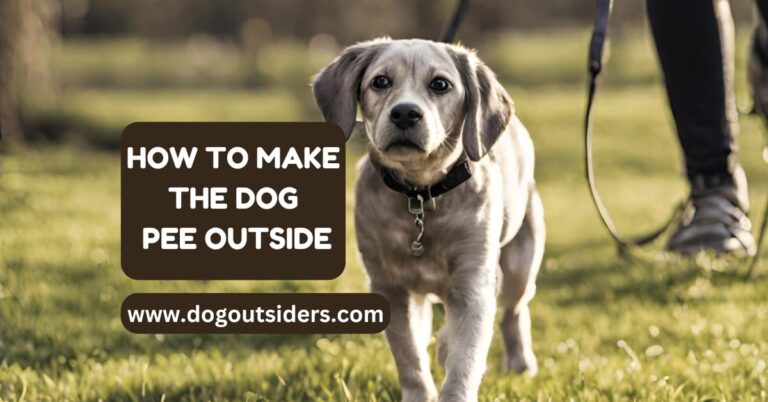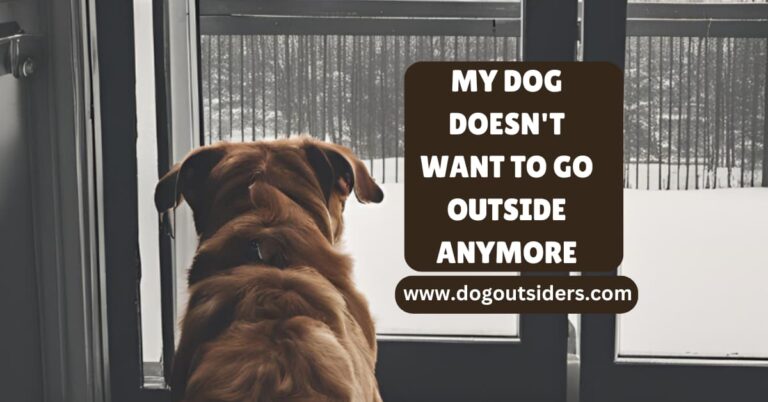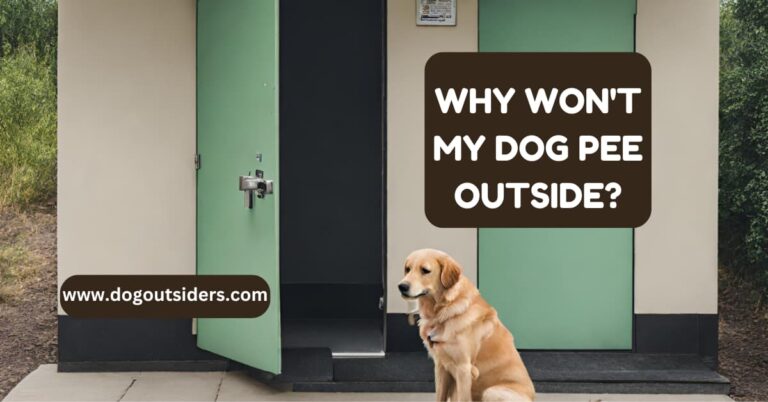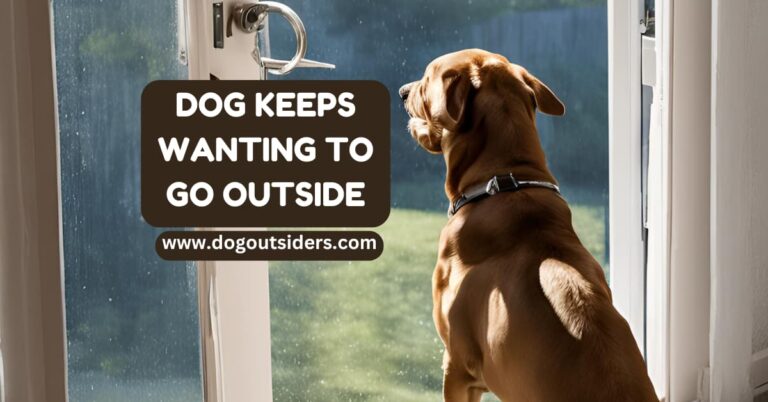Did you know that 1 in 5 dog owners struggle with their furry friends refusing to poop outside? Yes, “my dog refuses to poop outside often“. It can be frustrating and challenging, but fear not, as I have some tips and tricks up my sleeve to help you tackle this issue head-on. From understanding your dog’s behavior to implementing effective training techniques, we will explore how to encourage your pup to do their business outdoors. Let’s work together to make those outdoor potty breaks a success for both you and your beloved pet.
Essential Guidelines
Consistent Routine: Establish a regular schedule for outdoor potty breaks to help your dog feel more comfortable and confident.
Positive Reinforcement: Use treats and praise to encourage your dog to poop outside, creating a positive association with the behavior.
Addressing Anxiety: Identify and address any fears or anxieties your dog may have about outdoor environments through gradual exposure and positive experiences.
Medical Check-up: Visit a veterinarian to rule out any underlying medical issues that could be causing your dog’s reluctance to poop outside.
Behavior Modification: Work on behavioral issues by seeking professional training help and implementing consistent training techniques tailored to your dog’s needs.
Patience and Persistence: Be patient with the process and consistently apply the training methods to help your dog overcome their reluctance to poop outside.
Understanding Dog’s Refusal Reasons
Analyzing Environment
Dogs may refuse to poop outside due to common reasons such as feeling unsafe in the environment. Unfamiliar noises, smells, or other animals can trigger anxiety in dogs.
Changes in routine or surroundings can also impact a dog’s behavior. Understanding recent alterations like moving to a new house or changes in the family dynamic is crucial. These adjustments can lead to stress and reluctance to eliminate outdoors.
Observing Body Language
To comprehend your dog’s refusal, pay attention to their behavior cues. Signs like pacing, whining, or sniffing around indoors might indicate discomfort. Understanding these signals helps in addressing the underlying issue.
When my dog started refusing to poop outside, I realized that introducing a new pet into the household had caused distress. By observing his body language closely, I noticed he was exhibiting signs of anxiety and fear.
Seeking Professional Help
If your dog continues to resist pooping outside despite efforts to address potential triggers, consulting a veterinarian or professional trainer is advisable. They can provide expert guidance tailored to your dog’s specific needs.
In my experience, seeking advice from a certified dog trainer helped me understand my pet’s behavior better. The trainer suggested gradual exposure to outdoor spaces and positive reinforcement techniques which significantly improved the situation.

Incomplete Potty Training Challenges
Basic Principles
Establishing clear communication with your dog is essential for successful potty training. Consistency in commands and routines helps reinforce the desired behavior. Rewarding good behavior immediately after it occurs reinforces the positive association.
Potty training requires patience and persistence. Providing regular bathroom breaks throughout the day is crucial. It’s important to remember that each dog learns at their own pace, so avoid getting frustrated if progress seems slow.
Positive Reinforcement
Using positive reinforcement techniques such as treats, praise, or playtime can motivate your dog to poop outside. When your dog successfully goes potty outdoors, offer immediate rewards to reinforce the behavior positively.
To encourage outdoor elimination, take note of your dog’s body language and behavior cues indicating they need to go. By anticipating these signs, you can guide your dog outside promptly, increasing the chances of successful potty training.
Consistent Potty Schedule
Establishing a regular potty schedule helps regulate your dog’s bathroom habits and minimizes accidents indoors. Take your dog out first thing in the morning, after meals, before bedtime, and at regular intervals throughout the day.
Creating a routine around feeding times can help predict when your dog will need to go potty. By maintaining a consistent schedule, you can effectively reinforce good habits and reduce indoor accidents.
Addressing Fear and Anxiety Outdoors
Desensitizing the Dog
Gradually desensitize your dog to outdoor stimuli by starting small. Begin by spending short periods outside in a familiar area, allowing your dog to get comfortable with the surroundings. Slowly increase the time spent outdoors to help them adjust without feeling overwhelmed.
Taking baby steps can be beneficial in this process. Encourage your dog to explore different areas outside while providing positive reinforcement for any progress made. This approach helps build their confidence and reduces anxiety about being outdoors.
Creating a Safe Environment
Ensure that the outdoor environment is secure and free from potential triggers that may cause fear or anxiety in your dog. Remove any loud noises or unfamiliar objects that could startle them, creating a peaceful setting for them to feel at ease.
Setting up a designated potty area in your yard can also help establish a routine for your dog. By consistently using the same spot, they will feel more comfortable and confident in their surroundings, making it easier for them to relieve themselves outside.
Seeking Professional Help
If your dog’s fear and anxiety issues persist despite your efforts, it may be time to seek professional help. A certified dog trainer or animal behaviorist can provide specialized guidance tailored to your dog’s specific needs.
Professional intervention can offer valuable insights into understanding and addressing your dog’s anxieties effectively. They can create a personalized training plan to gradually expose your dog to outdoor environments while teaching coping mechanisms for managing their fears.
Identifying Medical and Physical Issues

Vet Check-Up
Schedule a vet check-up to ensure your dog’s health is in check. Look for any underlying medical conditions that may be causing the reluctance to poop outside. Monitor for signs of discomfort or pain while your dog tries to relieve itself.
I remember when my dog was refusing to poop outside, and it turned out he had a minor infection that needed treatment. Regular vet visits helped us catch such issues early on and address them promptly.
Signs of Discomfort
Pay attention to signs of discomfort, such as whining, pacing, or difficulty squatting. These could indicate medical problems like constipation or gastrointestinal issues. Look for changes in stool consistency or color, which might signal health issues.
When my dog started showing signs of discomfort while trying to poop, I knew something was wrong. Observing these signs helped me seek veterinary advice sooner rather than later.
Age-Related Health Concerns
Consider age-related health problems, especially in senior dogs. Older dogs may experience joint pain, arthritis, or other conditions that make it uncomfortable for them to squat and defecate outside. Routine vet check-ups can help manage these issues effectively.
As my dog grew older, I noticed he struggled more with mobility and seemed hesitant to go outside to relieve himself. Understanding his age-related challenges allowed me to provide him with the necessary care and support.
Behavioral Issues and Solutions
Training Methods
Implement various strategies to address behavioral issues with dogs who refuse to poop outside. Start by addressing separation anxiety through gradual training. Create a calm environment and gradually increase the time spent apart from your dog.
Introduce mental stimulation activities such as puzzle toys or interactive games to reduce stress levels. These activities engage your dog’s mind, promoting relaxation and reducing anxiety around bathroom habits.
Positive Reinforcement
Utilize positive reinforcement techniques to encourage desired behaviors. When your dog successfully poops outside, reward them with treats or verbal praise. This reinforces the behavior and encourages them to repeat it in the future.
Establish a routine for bathroom breaks, taking your dog out at consistent times throughout the day. Consistency helps your dog understand when and where they should eliminate, making it easier for them to follow the desired behavior.
Implementing Effective Crate Training
Use Crate as Safe Space
Introducing the crate as a safe haven for your dog can aid in reducing anxiety and promoting a sense of security. Place comfortable bedding and toys inside to make it inviting for your furry friend. Ensure the crate is spacious enough for the dog to stand, turn around, and lie down comfortably.
Gradually Increase Crate Time
Start by keeping your dog in the crate for short periods while you are at home to monitor their behavior. Gradually extend the time spent in the crate, ensuring frequent potty breaks outside. This gradual approach helps in acclimating the dog to spending more time in the crate without feeling anxious.
Personal Insight: I found that gradually increasing crate time helped my dog feel more comfortable and less stressed when confined. It’s essential to observe your dog’s reactions and adjust accordingly.
Avoid Using Crate as Punishment
Never use the crate as a form of punishment, as this can create negative associations with the space. Positive reinforcement and rewards for good behavior inside the crate can help establish it as a positive environment. Consistency in using the crate for training purposes is key to success.
Incorporating these strategies into your routine can significantly improve your dog’s willingness to poop outside. Remember, patience and consistency are crucial when implementing crate training methods.
Introducing Bell Training Techniques
Association Building
Teach your dog to associate the bell sound with going outside. Hang a bell by the door at your pup’s nose level. Every time you go out, ring the bell and say a command like “outside.”
I found it helpful to pair the bell with positive reinforcement. Whenever my dog showed interest in the bell or rang it, I praised him enthusiastically. This helped him understand that ringing the bell leads to a fun outdoor experience.
Consistent Practice
Consistently practice bell training at regular intervals throughout the day. Take your dog to the door and encourage them to touch or ring the bell before going out. Repetition is key to reinforcing this behavior.
When I started bell training with my dog, I made sure to maintain a routine schedule. By following a consistent pattern, my furry friend quickly grasped the concept of using the bell to signal his need to go outside.
Reward System
Reward your dog for successfully using the bell to indicate their need to go outside. Treats, praise, or playtime can be effective rewards for reinforcing this behavior. Make sure the reward is immediate to strengthen the association between ringing the bell and going out.
I noticed that rewarding my dog every time he rang the bell led to quicker progress in his training. The positive reinforcement motivated him to continue using the bell consistently, making potty breaks smoother and more predictable.

Creating Positive Pooping Experiences
Designated Area
Establishing a specific poop spot in the yard helps your dog understand where it’s appropriate to relieve themselves. This consistency reinforces the desired behavior.
When training your dog to use a designated restroom, ensure the area is easily accessible and away from their play or eating spaces. Dogs prefer privacy when doing their business.
To make the feel of the area more appealing, keep it clean by regularly removing waste. Consider using gravel or mulch for easy cleanup and maintenance.
Verbal Cues
Using verbal cues like “Go potty” or “Do your business” can signal to your dog that it’s time to poop. Consistency in these cues helps reinforce the desired behavior.
When giving verbal commands, maintain a calm and encouraging tone to reassure your dog. Positive reinforcement through verbal praise can also encourage them to use the designated poop area.
In my experience, incorporating familiar phrases or words that your dog responds positively to can enhance the effectiveness of verbal cues during training sessions.
Celebrate Success
Celebrating your dog’s successful outdoor pooping with treats or enthusiastic praise reinforces their good behavior. Rewarding them immediately after they finish encourages them to repeat this action in the future.
Praising your dog with phrases like “Good job!” or “Well done!” along with a pat on the head creates positive associations with pooping outside. This positive reinforcement strengthens their understanding of where they should go.
From personal experience, I’ve found that using a combination of treats and verbal praise creates a strong motivation for dogs to consistently choose the designated poop area over indoor options.
Establishing Routine and Schedule
Fixed Times
Establish set times for meals and potty breaks to regulate your dog’s bodily functions effectively. Consistency in feeding times helps in predicting when your dog will need to relieve itself.
Maintaining a regular schedule for feeding can help you anticipate when your dog will need to go outside. This predictability aids in creating a conducive environment for successful potty training.
Daily Routines
Consistency is key in establishing a routine for your furry friend. Dogs thrive on predictability, so sticking to a daily schedule helps them understand when it’s time to go out.
Creating a structured routine not only assists in potty training but also enhances your dog’s overall well-being by providing stability and minimizing stress.
Adjusting Based on Response
Be attentive to your dog’s reactions and adapt the schedule accordingly. If your dog shows signs of needing to go outside at different times, be flexible in adjusting the routine.
Flexibility is essential as every dog is unique with varying needs and behaviors. By observing and responding to these cues, you can tailor the schedule to suit your dog’s requirements.
Conclusion:
After delving into the various reasons why your dog might be refusing to poop outside, it’s clear that addressing this issue requires patience, understanding, and a tailored approach. From incomplete potty training to underlying medical issues or anxiety, there are several factors at play. By implementing effective crate training, bell techniques, and positive reinforcement strategies, you can help your furry friend feel more comfortable and confident outdoors. Establishing a routine and schedule, coupled with love and encouragement, will go a long way in overcoming this challenge. With time and dedication, you and your dog can work together to make pooping outside a positive experience. So, roll up your sleeves, stay committed, and watch as your pup learns to embrace the great outdoors for their bathroom breaks!
FAQ’s:
Dogs may refuse to poop outside due to fear, incomplete potty training, medical issues, or behavioral reasons. Understanding the specific cause can help address the refusal effectively.
Gradual exposure to outdoor environments, positive reinforcement techniques, and creating a safe space can help alleviate your dog’s fear and anxiety about pooping outside.
Medical conditions such as gastrointestinal problems, infections, or pain while defecating could lead to your dog avoiding pooping outside. Consulting a veterinarian is crucial for accurate diagnosis and treatment.
Crate training can create a sense of security for your dog and establish a routine for bathroom breaks. By using the crate effectively, you can encourage your dog to associate outdoor spaces positively with elimination.
Bell training involves teaching your dog to ring a bell when they need to go outside. This method helps communicate your dog’s bathroom needs effectively and reinforces the association between ringing the bell and going outdoors for elimination.







5 Comments